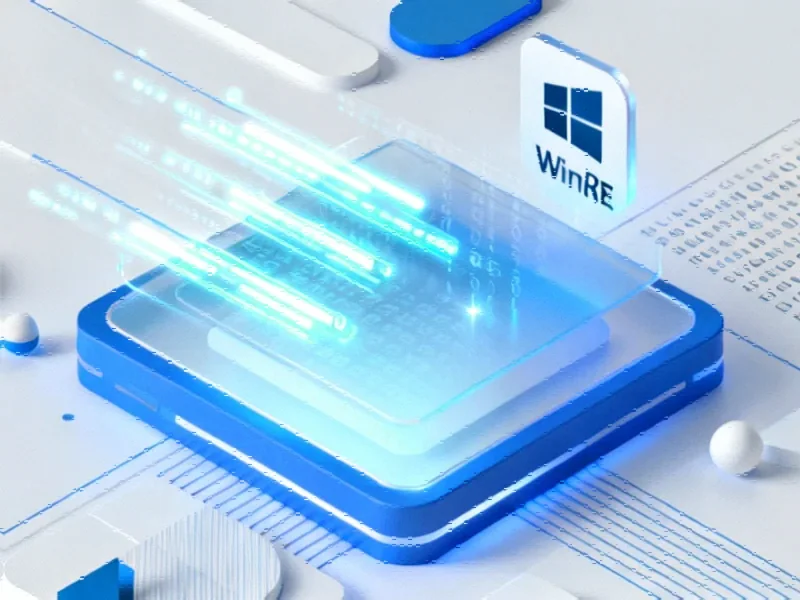The End of an Era: Windows 10 Reaches Official End of Support
Microsoft has officially drawn the curtain on Windows 10 support as of October 14, marking a significant transition in the PC landscape. While the operating system won’t suddenly stop working, the cessation of free security updates creates substantial vulnerability for the estimated 400 million devices still running the platform. The termination affects all Windows 10 versions, leaving systems increasingly exposed to emerging threats unless users take proactive measures.
The security implications cannot be overstated. Without regular patches, Windows 10 devices become progressively vulnerable to malware, ransomware, and sophisticated cyber attacks. This creates particular concern for enterprise environments, where millions face urgent upgrade decisions that could impact organizational security posture.
Extended Security Updates: A Temporary Lifeline
Microsoft’s Extended Security Update (ESU) program offers a crucial stopgap solution, providing paid security updates for Windows 10 through October 2026. This program is especially valuable for organizations with complex migration timelines or compatibility constraints. The ESU arrangement mirrors Microsoft’s approach with previous Windows versions, acknowledging that immediate mass migration isn’t feasible for all users.
For individual users and IT departments weighing their options, the ESU program provides breathing room to plan upgrades without sacrificing security. However, this temporary solution comes with increasing costs each year, creating financial incentive to transition to supported platforms sooner rather than later.
The Upgrade Landscape: Who’s Moving and Who’s Staying?
Current adoption statistics reveal a divided ecosystem. Globally, Windows 11 has captured 49% market share compared to Windows 10’s 40%, but the U.S. shows stronger adoption with 60% on Microsoft’s latest OS. The persistence of Windows 10 stems from multiple factors, including hardware compatibility limitations and user preference for the familiar interface.
Corporate environments face particularly complex challenges. Analysis from Omdia indicates approximately 550 million enterprise machines remain on Windows 10, with half unable to meet Windows 11’s strict hardware requirements. This creates a significant security dilemma for organizations that must balance security needs with practical constraints. These market trends in technology adoption mirror patterns seen in other industries facing transitional periods.
Hardware Hurdles: The TPM and CPU Compatibility Barrier
Windows 11’s hardware requirements represent the most significant upgrade obstacle. The mandatory TPM 2.0 specification and newer CPU requirements exclude millions of otherwise functional PCs. This creates both environmental concerns through accelerated device replacement and financial burdens for users and organizations.
For those facing compatibility issues, several paths forward exist:
- ESU enrollment for temporary security coverage
- Hardware upgrades where feasible and cost-effective
- Device replacement with Windows 11-compatible systems
- Alternative operating systems for technical users
The situation reflects broader industry developments where technological advancement sometimes outpaces infrastructure readiness.
Looking Beyond Windows: The Bigger Picture
The Windows 10 transition occurs alongside other significant technology shifts. As organizations navigate these changes, they’re simultaneously managing other strategic considerations, including how global economic factors might influence technology investment decisions in the coming years.
Microsoft’s approach to the Windows 10 sunset follows established patterns but comes at a time when digital security threats are more sophisticated than ever. The company continues to refine Windows 11 while reportedly developing future Windows versions that might address current compatibility concerns.
Practical Guidance for the Transition
For users determining their next steps, several key considerations should guide decision-making:
Immediate actions: Assess your device’s Windows 11 compatibility using Microsoft’s PC Health Check tool. Backup critical data regardless of your upgrade path. Review which applications might require updates or replacements.
Medium-term planning: Budget for necessary hardware upgrades or replacements. Evaluate whether the ESU program makes financial sense for your situation. Test Windows 11 on compatible devices to familiarize yourself with interface changes.
Security priorities: Even if sticking with Windows 10 temporarily, enhance security measures with robust third-party antivirus solutions, firewall configurations, and strict browsing habits. The end of support means users must take greater personal responsibility for their digital security.
The transition from Windows 10 represents more than just an operating system upgrade—it’s a moment that forces evaluation of our relationship with technology, sustainability through device lifecycle management, and personal responsibility for digital security in an increasingly connected world.
This article aggregates information from publicly available sources. All trademarks and copyrights belong to their respective owners.
Note: Featured image is for illustrative purposes only and does not represent any specific product, service, or entity mentioned in this article.

